Let’s cut straight to the chase: if you’re looking to buy a new projector with a maximum budget of £2000, then there’s no better choice than the Sony VPL-HW40ES. This machine excels at delivering alluring 2D and 3D images, and is even good for watching sports and playing video games on the big screen if those are your kind of thing. In fact, the HW40 is so outstanding that we firmly expect it to eat into sales of the Japanese manufacturer’s HW55 step-up model.
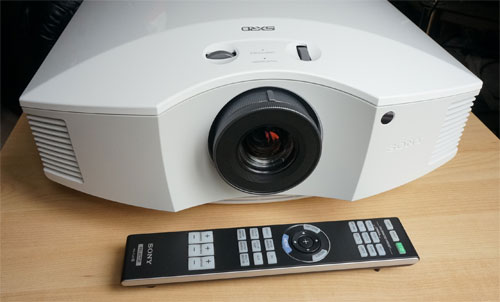
According to data from market research firm FutureSource, Sony is the leading brand worldwide for high-end home theatre projectors above US $3000 as of August 2013, securing larger market share (41%) than key rivals Epson (28%), Panasonic (16%) and JVC (6%). Not resting on its laurels, the company has now set its sights on the sub-£2000 segment with the surprise launch of the VPLHW40ES this spring, and what a pleasant surprise it is.
When we reviewed the Sony VPL-HW55ES some two months ago, we were bowled over, calling it “a fabulous package that never misses a beat in providing a compelling big-screen experience”. Well, pretty much the same can be said of the VPL-HW40ES, which is hardly surprising given that the more affordable projector retains much of the core of the HW55 including Sony’s SXRD panel, Reality Creation video processing engine, and MotionFlow technology.
From the spec sheet and also our time spent with the unit, the only major features missing on the HW40ES versus the HW55ES are an adjustable iris, additional customisable greyscale presets, and bundled active-shutter 3D glasses. Brightness is rated at 1700 lumens (plenty bright); and fan noise at 21dB (quiet) in low lamp mode.
Our review sample came in a lovely pearlescent white finish (model number VPL-HW40ES/W), but there’s also a black version (VPL-HW40ES/B) available. The design is unchanged from the VPLHW55ES, with the generously-sized chassis (relative to similarly priced projectors) sporting a topside curve and centrally mounted lens. Manual vertical and horizontal lens shift dials are located on the top of the projector; whereas zoom and focus can be done by rotating the lens rings (again manually).
Connection ports are found to the right side of the casing, including dual HDMI, VGA and component inputs. For control and system integration, there’s LAN, IR and RS-232 ports, though no 12V trigger.
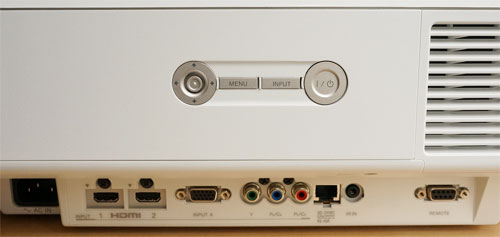
Calibration was relatively straightforward – popping the projector into [Reference] mode resulted in fairly accurate images. Be it a cost-cutting measure or intentional handicap to upsell, the Sony VPL-HW40 offers only one calibratable greyscale preset, namely [Custom 5], compared with the many presets provided on more expensive Sony projectors (of which [Custom 3] is usually the one closest to D65).
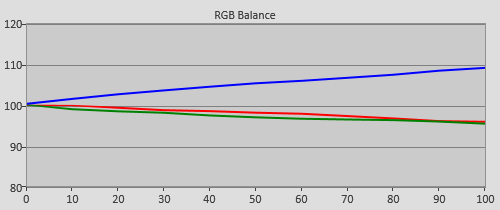 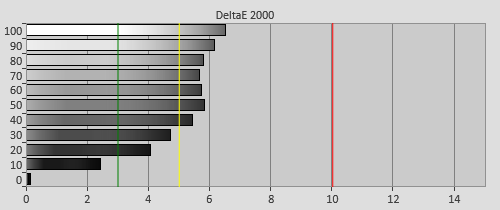 |
| Pre-calibration RGB tracking and delta errors (dEs) |
[Custom 5] uses a baseline colour temperature that’s further from D65, requiring heavier adjustments to the 2-point white balance controls. It’s certainly not insurmountable though.
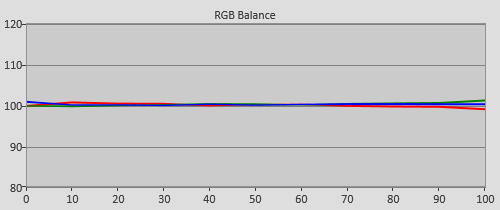 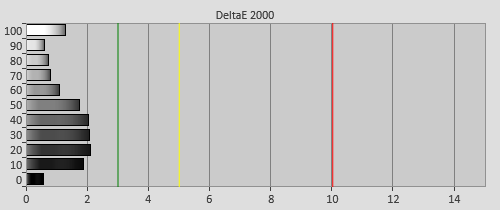 |
| Post-calibration RGB tracking and dEs in [Reference] mode |
The onboard colour management system (CMS), called [RCP] (for Real Colour Processing), was fiddly, leading to significant cross-contamination between parameters during adjustment. Because the colours in [Reference] mode were already quite accurate out of the box, we left [RCP] largely untouched.
![Post-calibration Colour saturation tracking in [Reference] mode](https://www.hdtvtest.co.uk/news/wp-content/uploads/2018/04/projector_Sony-VPLHW40ES_post-strack.jpg) |
| Post-calibration colour saturation tracking |
![Post-calibration colour errors in [Reference] mode](https://www.hdtvtest.co.uk/news/wp-content/uploads/2018/04/projector_Sony-VPLHW40ES_post-strack-de.png) |
| Post-calibration colour errors (<3 not appreciable to the eye) |
While the Sony HW40’s contrast performance was very good, nay, unrivalled at its price point, we couldn’t help but miss the adjustable iris on the HW55. As black level junkies who are constantly searching for the next drop in bottom-end cd/m2 however incremental, we would’ve loved to have the option of closing the iris manually to curtail light output and attain even deeper blacks (we probably wouldn’t have engaged the dynamic iris system). We suppose that’s where the £1000 price difference comes in.
| Dead pixels | None |
| Panel uniformity | Very good |
| Primary chromaticity | Very good |
| Motion resolution | [Film Projection]: 1080; [Motion Enhancer]: 650; both off: 300 |
| Digital noise reduction | Some mild temporal smoothing running at all times |
| Sharpness | Defeatable unless [Film Projection] on |
| Luma/Chroma bandwidth (2D Blu-ray) | Full Luma & Chroma |
| 1080p/24 capability | No judder in 2D or 3D |
| Input lag (Leo Bodnar tester) | 28ms in all presets if [Film Mode] is not “Auto1“ |
| Full 4:4:4 reproduction (PC) | Yes, in [Reference], [Photo] & [Game] modes |
SXRD is essentially LCoS which is in turn an LCD derivative, so the projector’s baseline motion resolution of 300 lines (as determined via the horizontally scrolling lines pattern in Chapter 31 of the FPD Benchmark Software disc) should come as no surprise to our regular readers. One way of combating motion blur on the VPL-HW40ES is by engaging [MotionFlow] > [Motion Enhancer] which increased motion resolution to around 650 lines. However, the frame interpolator introduced the inevitable soap opera effect to 24p movies, as well as intermittent interpolation artefacts.
Of more use is [MotionFlow] > [Film Projection] which we’re happy to see included at this price point. This is basically Sony’s dark frame insertion technology that so enthralled us when we first experienced it on 2012’s VPL-HW50ES. With [Film Projection] enabled, there’s added flicker (which may be intolerable to those who are sensitive), but to our eyes it just injected such a powerful, filmic feel to the picture. Motion clarity was heightened too (1080 lines); and while [Film Projection] caused faint double ghosted images and very mild undefeatable edge enhancement, we thought its pros far outweighed the cons.
The VPLHW40ES doesn’t ship with any 3D glasses included, but it’s worth buying a pair or two, because its extra-dimensional performance was as good as we’ve seen on a Sony projector. 3-D images were colourful and full-res, and the presence of native 24fps playback meant no telecine judder. There’s not much crosstalk either, which is a far cry from earlier generations of Sony 3D projectors and Bravia 3DTVs. Of course, 3D locks the HW40ES into high lamp mode, but the louder fan noise was still eminently bearable – it’s certainly less intrusive than that found on other makes.
We couldn’t fault the Sony HW40 for gaming: landing a headshot from afar in first-person shooter (FPS) games has never been easier. Sony makes some of the best gaming TVs on the market, and it’s heartening to see the company transferring the fabulous responsiveness into the projector realm. Measured using a Leo Bodnar device, input lag in every preset including [Game] and [Reference] modes was a zippy 28ms, rising to 64ms if [Film Mode] was set to “Auto1” (thanks Geoffrey Morrison for pointing this out).

So there you have it: the Sony VPL-HW40ES is a top-notch projector at a midrange price, which will bring plenty of joy to owners be it with Blu-ray movies, sports broadcast or video games. The dilemma facing most potential buyers will be whether to stump up £1000 more for its step-up VPL-HW55ES sibling whose adjustable iris promises deeper blacks.
Because we’re avid videophiles who would stop at nothing to chase the last drop of black-level performance, we’d probably lean towards the HW55, but we suspect most users who are not installing the projector in a dedicated bat cave will be happy enough with the HW40. One thing is clear though: like the HW55ES, the Sony VPL-HW40ES dominates its price class – there’s simply nothing out there that can touch it in the £2000 price range.
